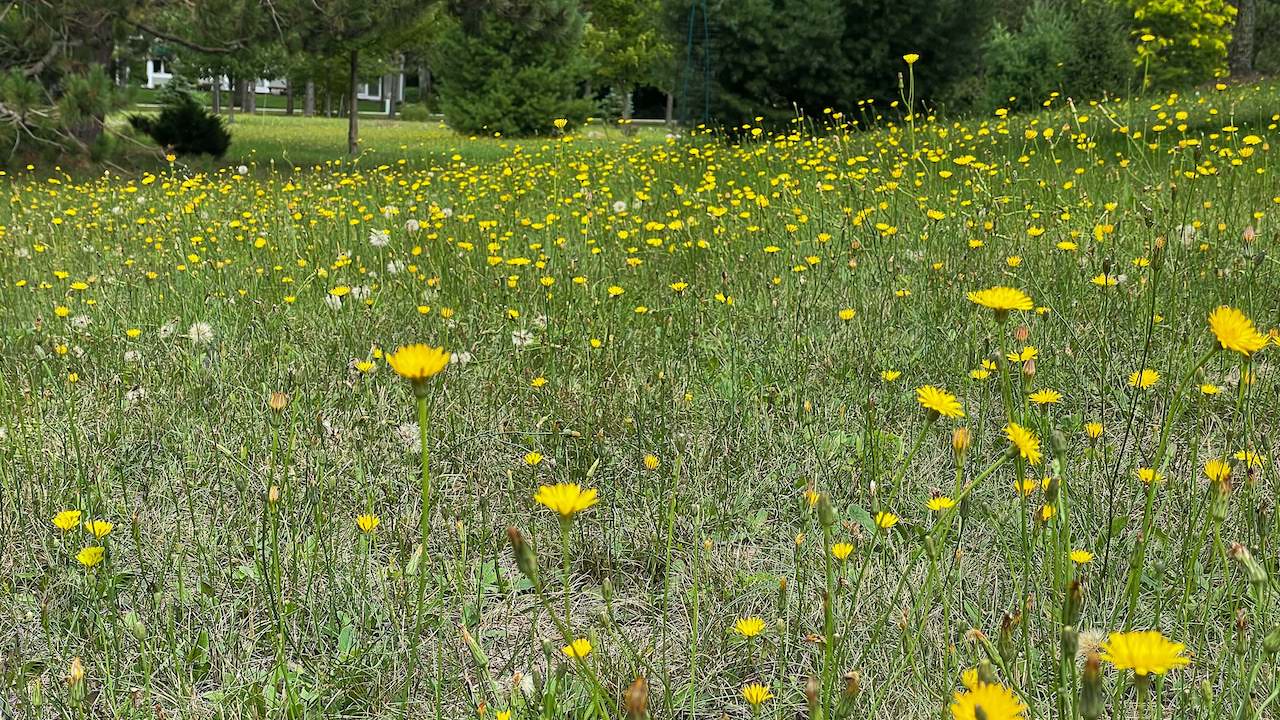Our first house had a bad lawn. It was full of weeds and bare patches, and reflected the kind of care one would expect from its previous status as a rental. Like others, I grew up appreciating a well maintained lawn, believing that a nice looking lawn equated to a well cared for house. We put in a sprinkler system for the large garden my wife created (which also watered the lawn), contracted with a service to “weed and feed,” and repaired bed edging that was buried or had decayed. This mirrored the efforts we made in our house through paint, siding, insulation, and other improvements, further supporting my belief that lawn care and home care went hand in hand.
I felt good about the work we had done, and a sense of pride as our thick lawn and expansive garden communicated our commitment to our home to others. It was our first home, and we were giving it TLC commensurate with the joy we felt living in that house. But questions would arise the longer we were there.
My wife was the first one to ask why lawns were valued in our society. I don’t remember why the question came up—maybe she’d read something or watched a program—but we started having conversations about the chemicals that were used for fertilizing and the water sprayed on the lawn. I couldn’t dispute the fact that the chemicals were not great for groundwater or animals, or that spraying city water over the yard was a waste of that treated water, but my rationale remained rooted in the same logic as before—your lawn was an indicator of how well you maintained your house, and a bad lawn would affect your home’s value no matter the ethical high ground we might wish to take.
The lawn at our next house was in good shape. We only needed to maintain the front and side yards because of an adjacent water retention pond and tall, established trees in the back yard. We hired a service again but didn’t have a sprinkler system until shortly before we moved two years later.
Our third home was where we were able to start employing a different philosophy regarding our lawn. Folks maintained their property, but there were few lush, green lawns during the summer months because the community allowed grass to do what it does when it gets hot—go dormant. We still treated our lawn (using organic fertilizers and weed killers this time), but did little watering and did not install a sprinkler system. I was surprised at how little of the lawn went brown each summer, and how it would come back in the fall. No longer fighting the natural order of things, I enjoyed lower water bills and escaped the need to time or schedule waterings. But it was our next move that would allow us to adopt our lawn care ideology without going against community expectations.
Our current home is in a wooded neighborhood, and while some properties do have grandiose lawns, others are like ours—more rustic and natural. The open spaces of our front yard are predominately grass, but the back is a carpet of hawkweed and wild strawberries bordered by huge red and black pines. This is a wild place, and for the first time we can embrace that aspect of our yard without having to worry about how it might affect a resale value; I’m still surprised at how much I enjoy looking out into our backyard and seeing hundreds of short wildflowers in bloom during the day—it’s a beauty we didn’t make but one we allowed nature to share with us.
I think it would be interesting to have a conversation with the “me” who bought that first home. He very much felt that a responsible and successful person would have a nice yard, and it was a necessary thing for him at that time. I wouldn’t criticize him or say he did anything wrong because all of our decisions are contextual (as were mine when I continued to do some of those things even after I felt they were not environmentally friendly). But I bet he’d be surprised to see how our values changed, and how I now feel a natural yard can be more beautiful than a manicured one.
